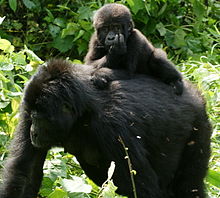
The use of basic technology is also a feature of other animal species apart from humans. These include primates such ascendant, some dolphin communities, and crows. Considering a more generic perspective of technology as ethnology of active environmental conditioning and control, we can also refer to animal examples such as beavers and their dams, or bees and their honeycombs.

Gorilla infants are vulnerable and dependant and thus mothers, their primary caregivers, are important to their survival. Gorilla mothers invest years caring for their offspring. Male gorillas are not active in caring for the young. However they do play a role in socializing them as they will associate with older infants and juveniles. The silverback has a largely supportive relationship with the infants in his troop. He will shield them from intra group aggression. Infants remain in contact with their mothers for the first five months and mothers stay near the silverback for protection.
No comments:
Post a Comment